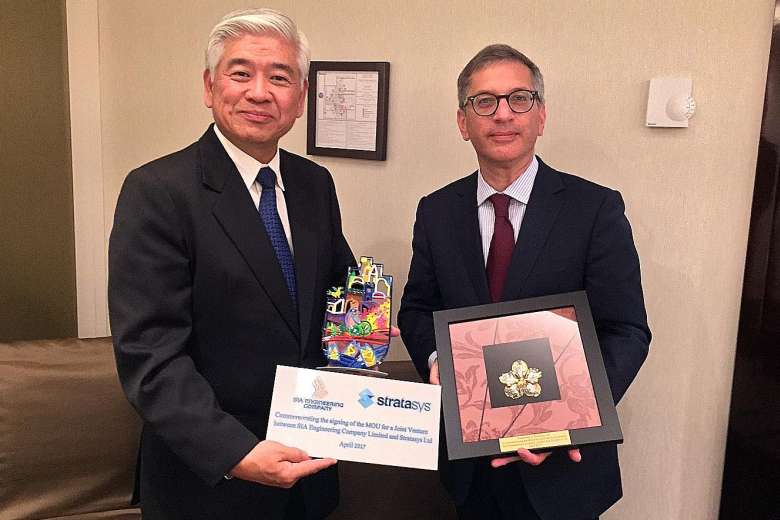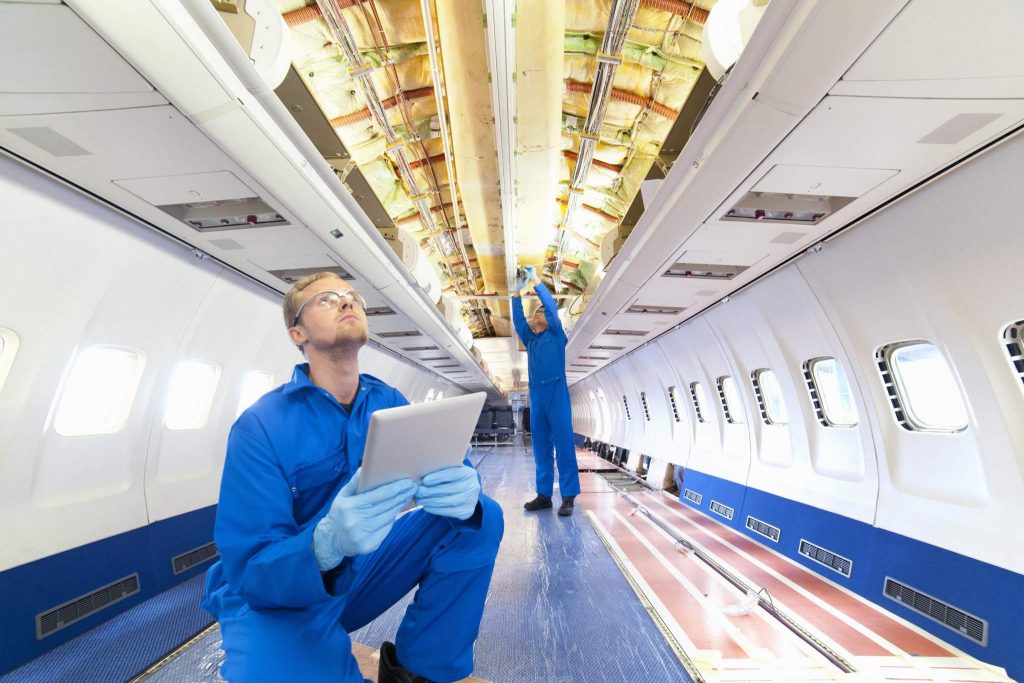Stratasys and Singapore-based aircraft maintenance company SIA Engineering Company (SIAEC) are one step closer to establishing a service center for 3D printed parts in commercial aviation, after the two companies signed a Joint Venture Agreement (JVA).
The JVA follows a Memorandum of Understanding (MoU) agreement that the two companies signed in 2017. Under the current agreement, SIAEC will have a 60% equity stake in the joint venture, while Stratasys will hold the remaining 40%.
Stratasys has also released a free white paper on using 3D printing to make thermoforming molds and tools.

An agreement to supply MROs and OEMs
When Stratasys signed the MoU with SIAEC in April 2017, the company’s CEO Ilan Levin reiterated a commitment to “advancing the use of additive manufacturing for high requirement aerospace applications” and to also solving “unique challenges of the MRO [maintenance, repair, and overhaul] segment and further drive adoption.”
The new service center, to be based in Singapore, will offer design, engineering, certification support and part production. Customers for this service are expected to include airlines, MRO providers, and original equipment manufacturers (OEMs).
Unlike companies like Sintavia which are 3D printing metal parts for aircraft exteriors, the commercial aviation service center will chiefly produce FDM/FFF 3D printed aircraft cabin interior parts as well as tooling for MRO providers. Png Kim Chiang, CEO of SIAEC commented:
“With increasing adoption of additive manufacturing technology in the aerospace industry, this joint venture will be able to access growing demand for additive manufacturing services.”
“We look forward to partner with Stratasys to provide our customers with new service offerings as we continue to enhance our suite of MRO services,” Chiang added.

The impact of 3D printing on thermoforming
Stratasys has also released a white paper entitled “Take Advantage of the Multiple Benefits FDM Thermoform Tooling Offers.”
The white paper introduces FDM thermoforming, outlines its benefits to industry, provides overviews on design, compares FDM materials for tools, addresses processing, post-processing and finally provides some test cases.
The white paper concludes that FDM-manufactured tools for thermoforming applications, compared to traditional methods, addresses the challenges of high tooling cost, long lead times and producing complex geometric shapes.
Tell us who you think is the best 3D printing company of the year. Make your nominations for the 3D Printing Industry Awards 2018 now.
For more stories on 3D printing in aerospace, subscribe to our free 3D Printing Industry newsletter, follow us on Twitter, and like us on Facebook.
Featured image shows SIAEC’s current Singapore facility. Photo via Singapore Business Times.


